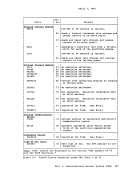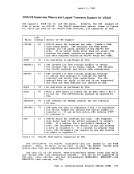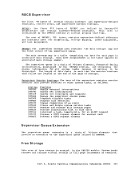user parameter list
message ID to be associated with the message and the userid of the user
to receive the message (data).
to
the section
executed with a data length of zero, only the user doubleword is
transmitted to the sink virtual machine. The sink virtual
then respond with a
doubleword of data to the source virtual machine. The external
interrupt message header identifies the
virtual machine executes a
transmitted from the source virtual machine storage to the sink virtual
storage. There is no internal buffering of data within the control
program
to virtual storage. Data is transferred in 2K blocks to test for
is complete, the source virtual machine receives a response external
interrupt indicating that the
virtual machine receives a
the
conditions associated with the
The sink virtual machine has the option to reject a message rather
than execute the
the sink virtual machine to be queued ahead of all other nonpriority
external interrupts. If there are other
pending for the sink virtual machine, the queuing is done in a first in
first out manner. That is,
themselves but ahead of all nonpriority interrupts.
single
interrupt to be queued for the sink virtual machine.
virtual machine receives the external interrupt, it can respond with the
transferred from the source virtual storage to sink virtual storage.
The sink virtual machine can then respond with a
virtual storage to a
source virtual machine then receives a response external interrupt
indicating that the
specifies the address and length of both the
user parameter list
message ID and userid of the user to receive the data (see the
156















































































































































































































































































































































































































































